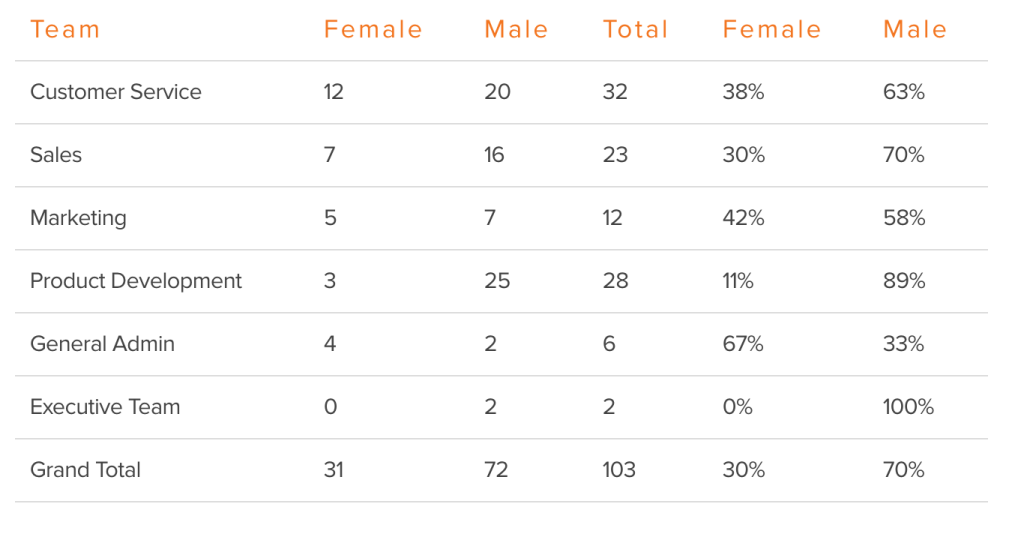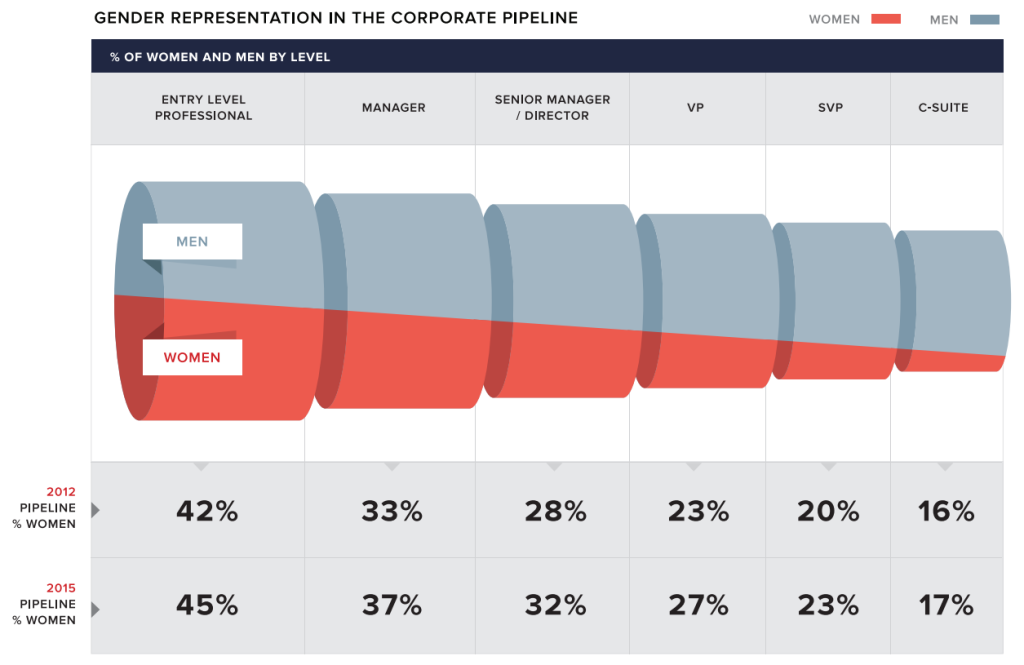For my first post of 2016, I’m going to look at how RJMetrics has evolved since I introduced this series back in February, what change was wrought (or not), and what I’ve learned in the process.
When I first started writing these posts, my intention was to discuss some topics that may be on the minds of other parents and advocates of workplace diversity. By documenting the internal efforts of RJMetrics to improve issues these groups are concerned with, we would be adding transparency and real world examples to these initiatives. These were my goals:
- Educate others about cultural changes that can attract and retain employees
- Challenge parents and parents-to-be to question their assumptions about what being a parent and working in tech is like
- Measurably improve the female to male ratio of our employees
Here’s my evaluation of how successful this has been.
Gender diversity
One of my main concerns that I addressed in my introduction to the series back in February was the issue of workplace diversity. This was our gender split at the time:

Unfortunately, even though we have added around 30 new team members since February, this 70/30 split is almost exactly the same.
So, did I lose momentum in my campaign to change these ratios? I admit, I wish making these changes on a company-wide level was as easy as writing blog posts to signal that we care about these issues. But, as I found from my work at TechGirlz, there are a number of complicated and labor-intensive factors that influence how many women we have amongst our team.
This is supported by the fact that RJMetrics is not the only company that is finding it hard to accelerate gender equality change. According to the 2015 Women in the Workplace study,
Female leadership is an imperative for organizations that want to perform at the highest levels. Yet based on the slow rate of progress over the last three years, it will take twenty-five years to reach gender parity at the senior-VP level and more than one hundred years in the C-suite.
Additionally, women are still underrepresented at every level of the the corporate pipeline, with the greatest disparity increasing as roles become more senior:

The bottom line is that there are still steps we have to take internally at RJMetrics to achieve real change. In the end, our gender split ratio improved by one percentage point since February, from 70/30 to 69/31.
Assumptions about startup parenthood
A major realization I had from writing these posts and advocating for workplace change was how much I underestimated the level of discomfort some people have when talking about parenthood. Even more interestingly, I found that parents are far less comfortable talking about these issues than people who anticipate becoming parents.
On the one hand, those that had yet to have children were excited and optimistic about their ability to succeed both at work and at home when they became parents, but those that actually have that experience were more reticent to advocate or discuss their personal experiences in a large group or public forum, even if they did voice a general support for the initiative.
But just doing the hard work of getting these dialogues happening has already been having a positive impact on our team. In 2015, our CEO, Head of People, and various others have launched many different initiatives (conversations, trainings, etc.) all in the vein of thinking about and addressing workplace culture. In fact, we recently changed our benefits program in ways that benefit parents especially, and I’d like to think that some of what this Startup Parenthood series has generated internally has impacted or at least empowered the people who are focused on those aspects of RJMetrics.
While the gender diversity chart is discouraging, it doesn’t reflect how I feel about the direction of our company’s culture, nor does it represent the many moments that inspire hope from myself and the rest of the team, which is hardly quantifiable. There is one statistic, however, that I’m extremely proud of:
RJMetrics has never lost an employee after they became a parent – male or female.
My plan for next year and beyond
In taking a step back to look at how the organization is evolving in general, I’ve come to understand that my role may not be about directly creating an impact on the gender ratio, but instead, providing executive leadership and sponsorship for these topics – i.e. helping to create and define a safe space.
Other RJMetrics executives have proactively reached out to me, asking about the best ways to think about their own team’s concerns, and how to begin those conversations. I’ll continue to write about these issues on my own blog, but I think I’ll be able to make the most difference providing support at RJMetrics — that and leading by example. And so I’ll leave you with an example.
Recently, I had to conduct the most important team meeting of the year. My daughter didn’t have school that day, my husband wasn’t able to look after her, and I couldn’t find any child care. So, I brought her to the office, sat her at the head of the table, set up Netflix on the iPad, and conducted the meeting in a full room of 50 team members.
Of course, I was nervous that my daughter would act up (which she didn’t), or that her being there would distract from the meeting, but it was also an opportunity for me to demonstrate that RJMetrics supports parents. Life happens to all of us, from VP to entry-level, and the most powerful messages aren’t conveyed by what company leaders say, but why what we do.
